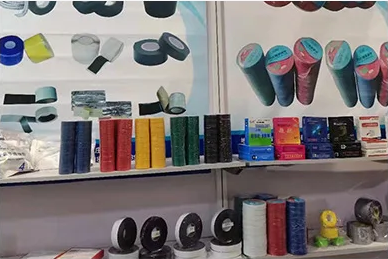The Importance of Wire Harness in Automotive Applications and the Role of Cloth Tape
In the automotive industry, the wire harness serves as a lifeline, transmitting electrical power and signals throughout the vehicle. As cars become more sophisticated with the inclusion of advanced technologies, the complexity of wire harnesses has also increased. The integration of electronic components such as sensors, entertainment systems, and advanced driver-assistance systems (ADAS) relies heavily on wire harnesses. However, the functionality and longevity of these harnesses depend greatly on their design, materials, and protective measures, such as the use of cloth tape.
Understanding Wire Harnesses
At its core, a wire harness is a collection of wires, terminals, and connectors that work in tandem to facilitate electrical connectivity. Wire harnesses are designed to withstand various environmental conditions, including heat, moisture, and vibration. Each harness must be meticulously engineered to ensure that it meets the specific requirements and standards for the vehicle it is designed for.
The construction of wire harnesses involves selecting appropriate materials and protective components. This is where the use of cloth tape comes into play. Cloth tape, made from woven fibers coated with a pressure-sensitive adhesive, is highly beneficial in the automotive industry due to its durability and versatility.
The Role of Cloth Tape
Cloth tape is often used in conjunction with wire harnesses for insulation, bundling, and protection against abrasion. When applied correctly, it offers several advantages
1. Durability Cloth tape is extremely durable and can withstand high temperatures and repetitive motion. This makes it especially suitable for automotive environments where wires are subjected to various stresses.
2. Insulation The tape provides an insulating layer, helping to prevent electrical short circuits that can occur due to wear and tear or moisture exposure. Effective insulation is crucial for maintaining the integrity of the vehicle’s electrical system.
wire harness automotive cloth tape

3. Noise and Vibration Dampening The woven nature of cloth tape can absorb vibrations, thereby reducing noise generated by the movement of wires within the harness. This results in a quieter cabin experience for passengers.
4. Flexibility and Malleability Cloth tape is easy to apply and can conform to various shapes and sizes of wire bundles. This flexibility facilitates the installation process, allowing for a cleaner and more organized presentation of the wire harness.
Additional Benefits in Automotive Manufacturing
In addition to its protective properties, cloth tape is often favored in automotive manufacturing due to its aesthetic benefits. The cloth-like appearance of the tape can contribute to a more polished look when wires are bundled neatly, a crucial factor when designs are scrutinized for both functionality and appearance.
Moreover, cloth tape is often more cost-effective compared to other types of insulation and protective materials. Its ease of use and application also translates to reduced labor costs during the manufacturing process.
Conclusion
As the automotive industry continues to evolve, the components that support its electrical systems must also improve. Wire harnesses are vital for seamless electrical connectivity, and cloth tape is an essential material that enhances their performance and longevity. By offering durability, insulation, vibration dampening, and aesthetic appeal, cloth tape has secured its place as a reliable solution in the automotive wire harness manufacturing process.
In summary, as vehicles become more reliant on complex wiring systems, the importance of quality materials and protective measures in their assembly cannot be overstated. Cloth tape, with its unique properties, plays a pivotal role in ensuring that wire harnesses function effectively and contribute to the overall success of automotive technology.
-
XIANGFAN Rubber Tape-Ultimate Solutions for All Your Insulation NeedsNewsJun.24,2025
-
XIANGFAN Rubber Tape-Protection for Industrial and Residential ApplicationsNewsJun.24,2025
-
XIANGFAN Rubber Tape: Superior Safety and Sealing for Demanding EnvironmentsNewsJun.24,2025
-
XIANGFAN Rubber Tape: Reliable Solutions for Every Electrical ChallengeNewsJun.24,2025
-
XIANGFAN Electrical & Industrial Tape: Powering Reliability Across IndustriesNewsJun.24,2025
-
XIANGFAN Electrical & Industrial Tape: Excellence in Every ApplicationNewsJun.24,2025
